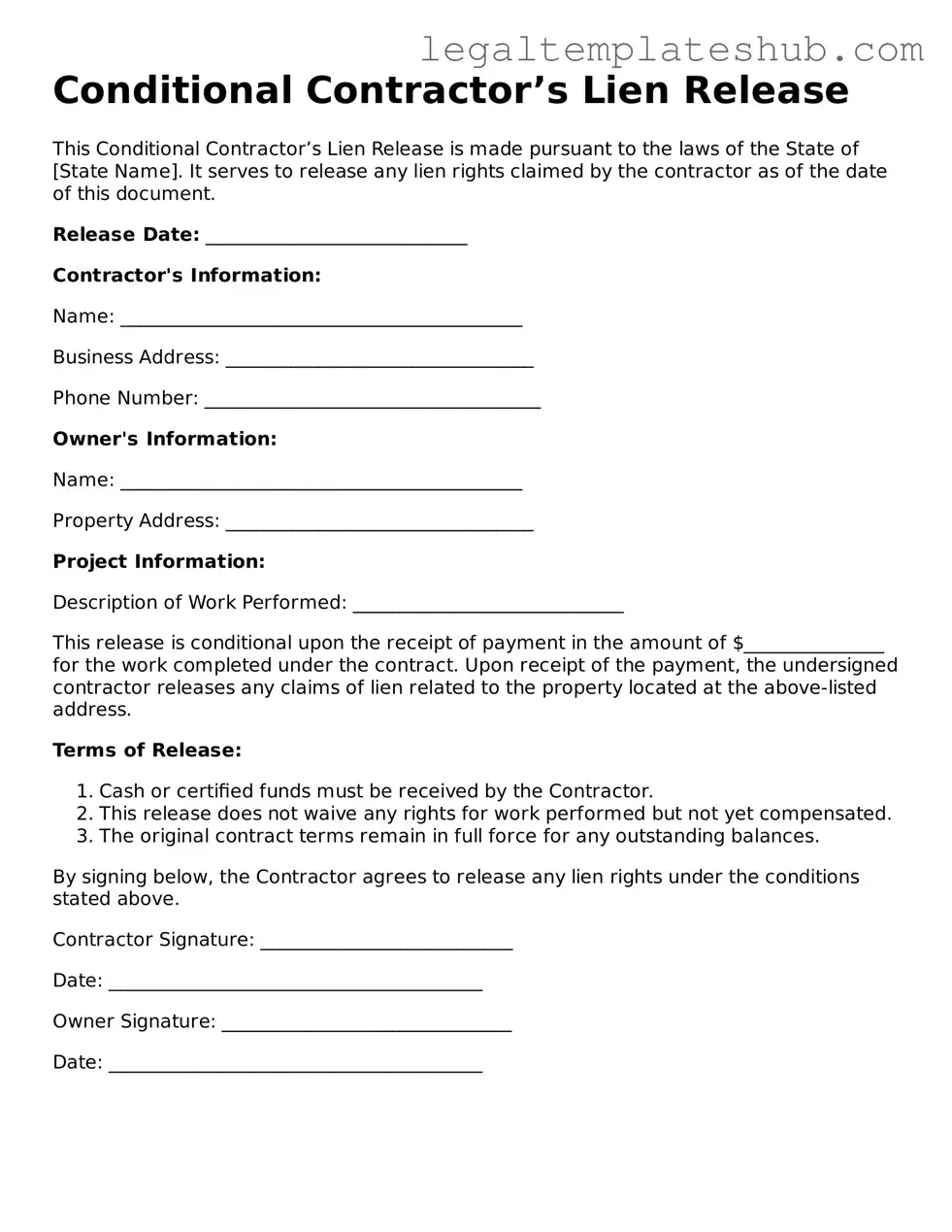Printable Conditional Contractor’s Lien Release Template
The Conditional Contractor’s Lien Release form is a legal document that allows a contractor to release a lien on a property, contingent upon receiving payment for services rendered. This form provides a safeguard for both the contractor and the property owner, ensuring that the contractor will relinquish their claim if the payment is made as agreed. For those looking to navigate the complexities of construction payments, filling out this form is an essential step; click the button below to get started.
Access Editor
